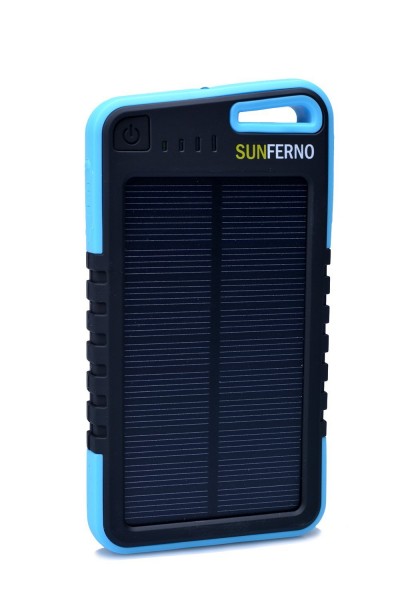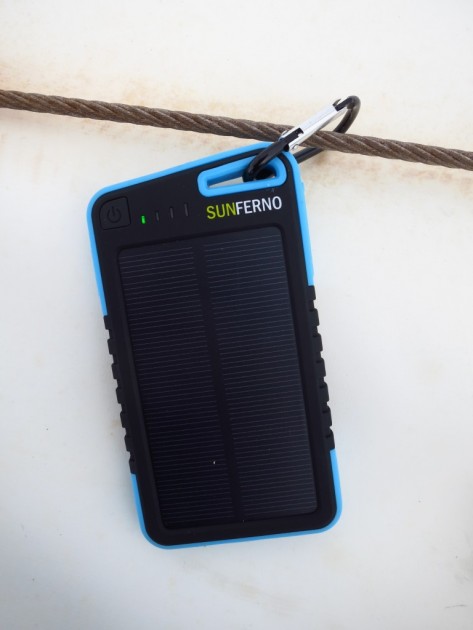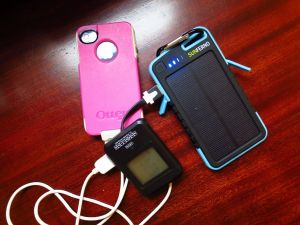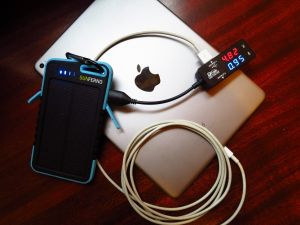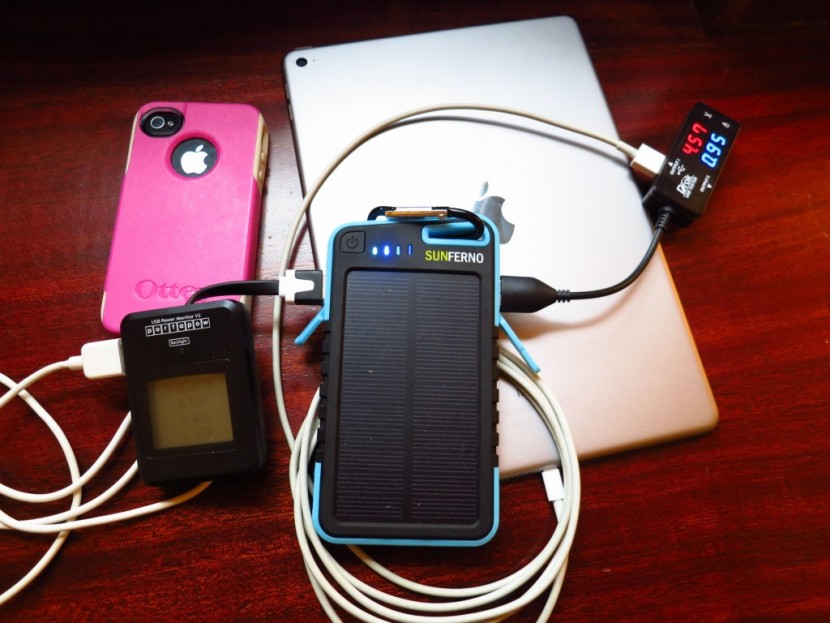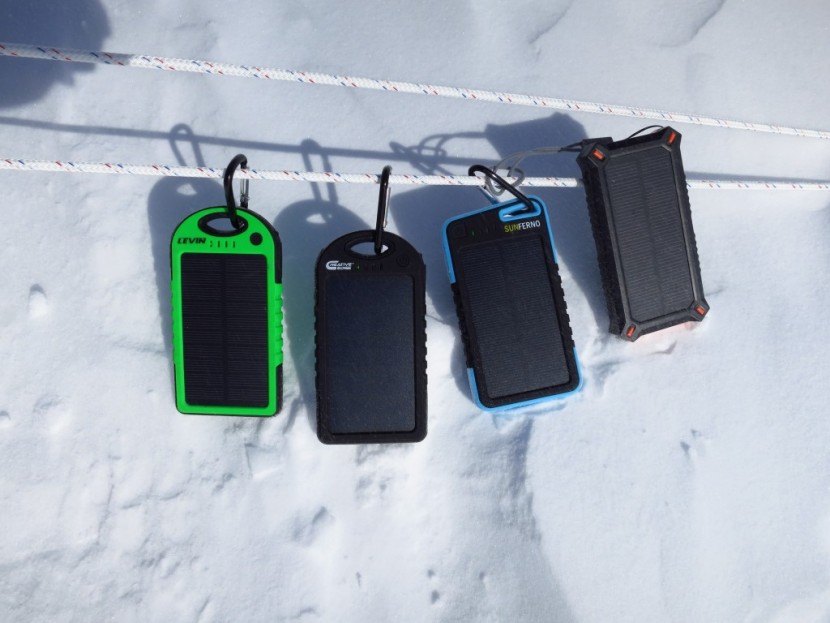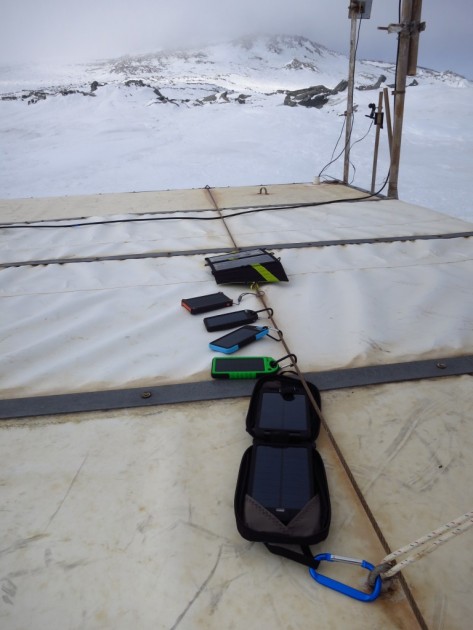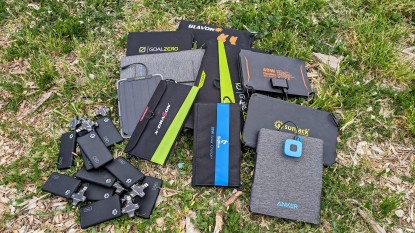SunFerno Flintstone Review
Our Verdict
Our Analysis and Test Results
The SunFerno Flintstone has arguably the best name of the solar chargers in this review. That is the only category in which the device truly excels. Overall, the specs of the Flintstone don't say “wow,” but we found it to exceed our expectations.
Output Power
The 1.2 watt solar panel is on par with other similar solar chargers in this review. This is not much wattage for your buck, so we figure the battery had better make up for the high (relative) price.
Ease of Use
This solar charger features auto-restart technology which ensures that the panel will continue charging the battery even after a cloud has passed or someone walked by and momentarily shaded the panel. This is a critical element in any solar panel.
The device also features 4 LEDs which indicate the percentage of battery left, or how much is charged when plugged into the wall. They each correlate, instinctively, to 1/4 or 25% battery charge.
The green charging LED would turn on any time the Flintstone detected any light whatsoever (even in a dark corner of a room with a window open). This meant wherever we went with the device, a green electronic glow would often follow. We weren't overly fond of this feature, and can't see a benefit to the light being so sensitive to light. Indeed, this uses a little electricity, so it probably doesn't help the overall efficiency or long-term durability of the internal electronics.
The Flintstone comes with a carabiner that attaches to the carved-out, rubberized hole in the top right of the device. This proved to be awkward--it would hang at a skewed angle off packs and the hole was not quite big enough to allow easy carabiner operation--at one angle, it even gets caught in a jack-knifed position.
Weight
The Flintstone is (barely) the lightest of the panel/battery integrated chargers. It feels solid and is easy to toss into your backpack for a quick overnight backpacking trip, or an unexpected extension to a night out on the town. It looks stylish enough to tote around with you, too.
Versatility
SunFerno says the battery will charge via sunlight in 12-14 hours--but that only half the battery can be charged via sunlight. This highlights the fact that this device is really only to be considered “emergency” back-up solar power. If you're lucky, you might get a little more juice from the sun. In our testing, the solar charging proved predictably unpredictable--and minimally functional.
SunFerno advertises that its Flintstone is optimized to function in temperatures from 0-45*C (32-113*F), so we decided to double check that by using it in the temperate Pacific Northwest and in the highly variable summer in Antarctica, where temperatures can range from well below freezing to, well, not exactly tropical.
In one test at 11,000 feet in Antarctica, we left the SunFerno out in the sun for 11 hours (in the 24 hour sunlight). The panel registered no charge; however, when we plugged it in to our iPhone 4, it charged it 10% in 15 minutes! We were stunned, so we plugged it into our iPad and it charged it 13% in about an hour before the Flintstone was finally depleted.
We were pleased with this performance in a device marketed as an “emergency use” solar charger. But we were also disappointed in its unpredictability. It's great that it came through, but it seemed a little more like magic than science, making it hard to recommend as an item to really depend upon, even for “emergencies.”
Portability
Gold star for portability! This solar charger, along with the Creative Edge Solar 5+ and the Levin Dual USB Port 6000mAh Panel, is light and small enough to tuck into your back pocket like your smartphone.
Best Application
This is a fun device that will charge a little in the sun but should not be counted on in an emergency, as advertised. The solar charging capacity is not fast enough to be useful in an emergency. If you have a full battery already when you have your emergency then it will be useful, but it will not charge up in a hurry when the sun comes out. As such, we recommend this device for quick overnight trips where light weight is important and you don't anticipate much charging of phones or other USB devices.
Value
This solar charger is a much better deal than the Creative Edge and more expensive than the Levin Dual USB Port 6000mAh Panel. It is probably the best value in its category, because the Levin charger turned out to be way too glitchy and unpredictable.
Conclusion
Our reviewers really didn't like any of the solar panels with integrated batteries. The compromise detracted too much from the functionality of a foldable solar panel and a separate external battery. We think a simple, high quality, lightweight external battery for short trips is a better choice--and adding a high quality, small solar panel for extended trips, like what you get with the Goal Zero Venture 30 Solar Recharging Kit. With this setup, you can rely on a powerful battery (with high output amperage) so you don't even need a powerful solar panel--supposing you have enough time to slowly charge your battery with a minimal wattage panel.
Other Versions and Accessories
Included: micro-USB cable, carabiner


